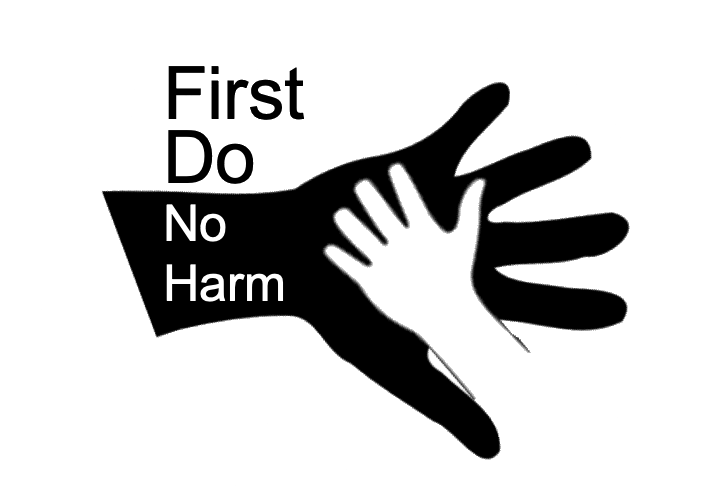PAUSE to Prevent Pediatric PTSD

Previously, we have discussed the importance of avoiding (or at least limiting) the secondary injury that can occur from trauma. For instance, in Major Traumatic Brain Injury cases the primary insult occurred at the moment of impact. Our goal is to avoid any secondary injury by preventing hypotension or hypoxemia. We can make a positive impact on those patients by paying attention to relatively simple concepts (ie, keep patient comfortable and sedate, keep head midline, keep head of bed at 30 degrees). In the setting of trauma, we are pretty good at thinking of the anatomical and physiological consequences of that injury and hopefully anticipating the potential secondary injuries that can be developing before our eyes. What we need to also consider, but perhaps are less adept at, is the emotional secondary injury that is developing also. Similar to the positive impact that we can have on the physical state, we can also have a positive impact on the patients emotional health as well. Let us consider taking a PAUSE to Prevent Pediatric PTSD:
PTSD in Pediatric Patients
Trauma can cause more than physical pain.
- The psychological impact of trauma is often under appreciated. [Meneses, 2020]
- Current estimates:
- 5 – 20% of children exposed to trauma experience PTSD.
- That is a lot of children, when you consider 1/4 of children seek medical attention for accidental injuries each year.
- Trauma is the leading cause of morbidity and mortality in children.
- Post-Traumatic Stress Disorder (PTSD: [Meneses, 2020]
- Is a state of anxiety after a physical or psychological traumatic incident.
- Includes symptoms of extreme fear, anxiety, insomnia, helplessness, and recurring memories.
- May result in avoidance of people, places, or objects associated with the event.
- Symptoms last longer than 30 days.
- Signs of PTSD in a child can be subtle:
- Irritability
- Decreased school performance
- Sleep disturbance
- Reduced creativity
- Withdrawal
- Altered appetite
- Depression
- Somatizations
- Pronounced startle response
- Behavioral problems
PTSD has been associated with: [Beaulieu-Jones, 2022; Meneses, 2020]
- Lower academic achievement (impaired cognition)
- Increased incidence of depression
- Increased incidence of suicide attempts
- Increased incidence of substance abuse
- Increased incidence of social dysfunction
Risk factors for children developing PTSD: [Meneses, 2020]
- Higher Injury Severity Score (ISS)
- Lower income (ie, less resources to seek treatment and care for PTSD)
- Lower level of education (ie, less awareness of needing to seek care)
- Another factor that can influence development of PTSD –
- Lack of Screening for PTSD, as patient may now go undiagnosed.
- Only ~50% of level 1 or 2 Pediatric trauma centers report screening for emotional distress. [Kassam-Adams, 2015]
American College of Surgeons recommends screening for PTSD.
- There are several Screening and Confirmatory tools for Pediatric PTSD. [Meneses, 2020]
- Trauma-Informed Pediatric Care does include acts that help reduce PTSD. [Beaulieu-Jones, 2022]
- Minimize Potentially Traumatic Aspects of Medical Care and Procedures
- Provide Children/Families with Basic Support and Information
- Addressing Immediate Child Distress (ex, Pain, Fear, Loss)
- Promote Emotional Support
- Identifying Family Needs
- Screening
- Anticipatory Guidance about Adaptive Coping Skills
- A team-based approach utilizing Child Life Specialists, Social Workers, and Child Development Specialists is ideal… but… we still play a significant role!
Pediatric P.A.U.S.E protocol to prevent PTSD.
The Pediatric P.A.U.S.E [Beaulieu-Jones, 2022]
- P = Pain and Privacy;
- Address pain and treat it early!
- Remove unnecessary personnel and respect the individual’s privacy.
- A = Anxiety and Access;
- Address the patients fears in an age-appropriate manner.
- Determine whether IV access is necessary (not just reflexive).
- U = Urinary Cath / GU Exam / Rectal Exam;
- Determine whether foley or urinary cath will be necessary (unlikely).
- GU and Rectal exams increase anxiety and stress. Do you need to do it?
- S = Support for the Child from Family or Child Life Specialists (or PICU team);
- A team member should be positioned near the child’s head to communicate with the patient and give support.
- Family members can be used to help assuage anxiety.
- E = Explain to the Patient;
- Using age-appropriate communication let the patient know what is going on and what to expect.
- They may be tiny people, but they still have autonomy and like to have that respected.
Applying the Pediatric P.A.U.S.E [Beaulieu-Jones, 2022]
- The Pediatric P.A.U.S.E has been shown to be able to be performed expeditiously and without interfering with timely trauma evaluations.
- After the Primary Survey, if the patient is not deemed to be unstable and requiring emergent interventions, the Pediatric P.A.U.S.E. was able to be quickly reviewed (< 5minutes) prior to proceeding to Secondary survey.
My Humble Opinions… (sorry… every once in a while I get to speak my mind)
- Don’t be Cruel! Treat pain expeditiously!
- Not everyone needs Ketamine… but everyone needs to be treated like a person (even little people).
- Talk to your patient! Don’t just bark orders. Or… if you aren’t good at talking to children (you know who you are…), then designate someone who can.
- Slow down! Be thorough, not frantic. Very few procedures need to be done immediately in children… even chest tubes! Children tolerate pneumothoraces well.
- Not every hole needs a finger in it! Come on… we have long past the dark days of requiring rectal exams on everyone!
- If you don’t have Child Life… tell your boss and your boss’s boss that your pediatric patients and your team need them!
Moral of the Morsel
- First Do No Harm – Neither Physical Nor Emotional Harm!
- Simple actions can help decreased secondary injuries. Being kind and considerate (in the truest sense of those words) can help mitigate ongoing emotional trauma.
- PTSD does occur in all ages. Kids are not immune to it.

